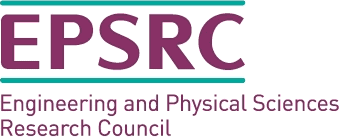Associate Partnership
An Associate Partner of PRIMaRE is a national, or international academic, research or industry organisation that has agreed to join the PRIMaRE Network of Excellence by collaborating to address research and development challenges facing the Marine Renewable Energy (MRE) sector (including wave, tidal stream, tidal range and offshore wind). PRIMaRE Associate Partner Members have agreed to work together, aligned with PRIMaRE Objectives. An Associate Partner of PRIMaRE may be invited to attend meetings on the Steering Committee (with no voting rights), collaborate in PRIMaRE events (e.g., PRIMaRE Conference, Key Challenge Workshops) and will be listed on the PRIMaRE Web page.
University of Uppsala
Department of Engineering Sciences
Ångströmlaboratoriet,
Lägerhyddsvägen 1,
Box 534,
751 21 Uppsala
Sweden
Cranfield University
Offshore Renewable Energy Engineering Centre
Cranfield Campus,
Cranfield University,
Cranfield, Bedfordshire
MK43 0AL
Loughborough University
Departmenrt of Mathematical Science
Ashby Roas,
Loughborough,
Leicestershire,
LE11 3TU
MASTS
Marine Alliance for Science and Technology for Scotland
C/O Scottish Oceans Institute
East Sands,
St Andrews,
Fife KY16 8LB
Email: [email protected]
Bangor University
Centre of Applied Marine Sciences
School of Ocean Sciences
Bangor University
Menai Bridge
LL59 5AB
University of Western Australia
University of Western Australia
35 Stirling Highway,
Crawley, Perth, 6009,
Australia
Membership Application Process
The application process to become a member of PRIMARE starts by submitting the appropriate PRIMaRE Associate Partner or PRIMARE Full Partner application form to either [email protected] or to the Chair of the Steering Committee.
The application forms can be requested to [email protected]. The application will then be included for consideration at the next available PRIMaRE Steering Committee meeting.
Documents
Up to: Organisation ↗

